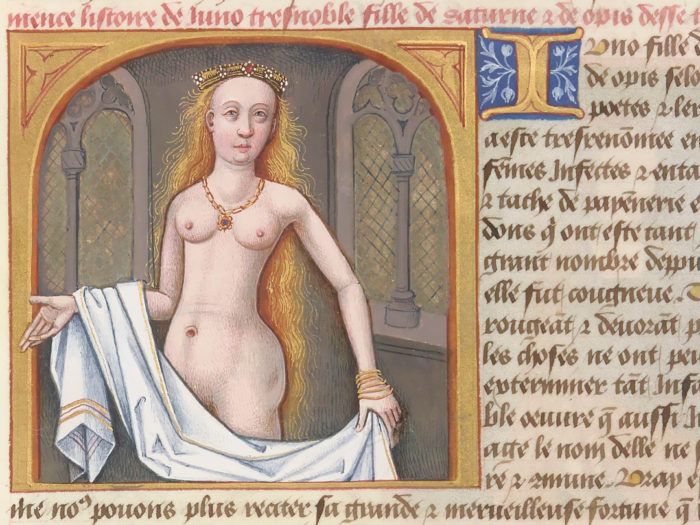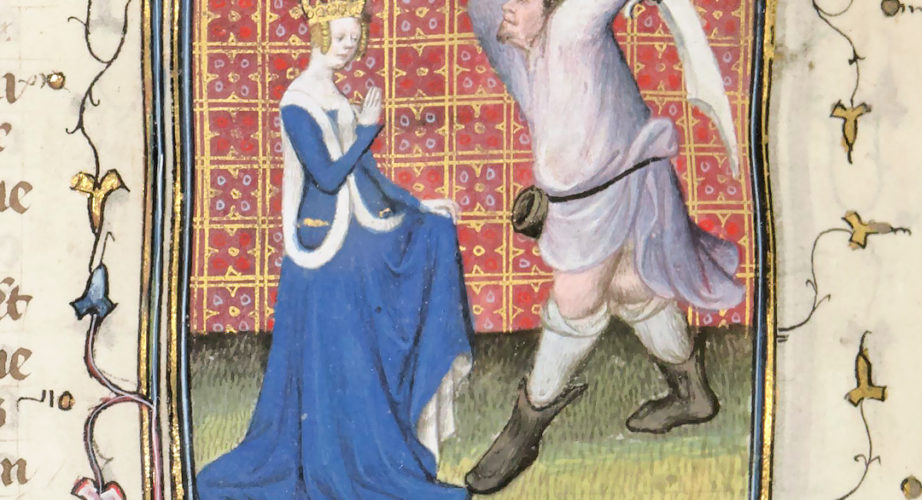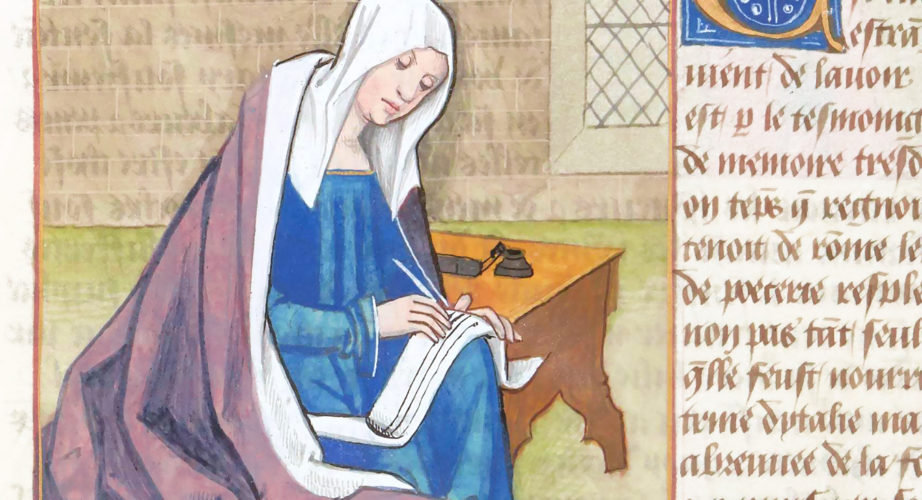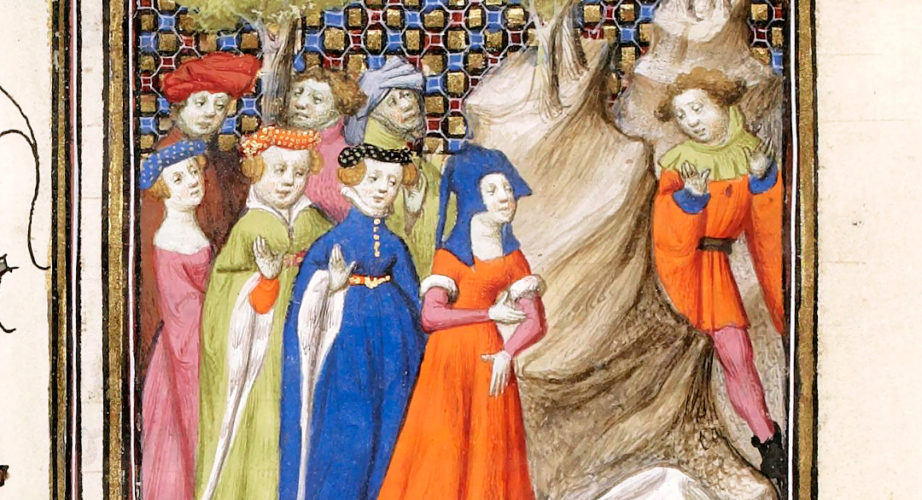Juno

This week’s Women’s Wednesday features a new Mulier Clara: Juno, queen of the Greek gods and patron of marriage and childbirth. The illuminator Robinet Testard, as seen above, depicts the goddess with bare womb and chest in order to symbolize her femininity.
Juno, part of the Capitoline Triad together with her husband Jupiter and the goddess Minerva, was also considered the most important female deity. Greek mythology attributes to the goddess the creation of the Milky Way: while being breast-fed by the queen, Hercules, Jupiter and Alcmene’s lovechild, suckled on her breast with too much force. The milk that squirted out formed the stream of stars that we now see in the sky. Known for the complexity of her personality, not only did she represent fertility but was also the protector of the state. Being associated with a military role, she was often portrayed with weapons. Boccaccio, however, strongly criticizes the goddess and defines her “fortunate” - claiming that Juno did not accomplish great deeds by herself but gained fame and devotion only thanks to her marriage with Jupiter.
“Juno”, illumination from the manuscript “De Mulieribus Claris”, decorated by Robinet Testard, ms. Français 599, f. 7v, 1488-1496, Bibliothèque Nationale de France, Département des Manuscrits, Paris.
Historically and mythologically speaking, being in a powerful position (and perhaps also a…
The time has finally come for the very first Women’s Wednesday of 2021!…
Welcome back to another Women’s Wednesday! Our weekly Mulier Clara, much like Sappho…


